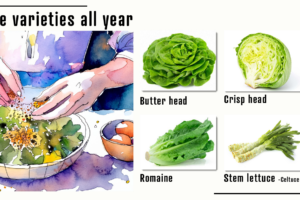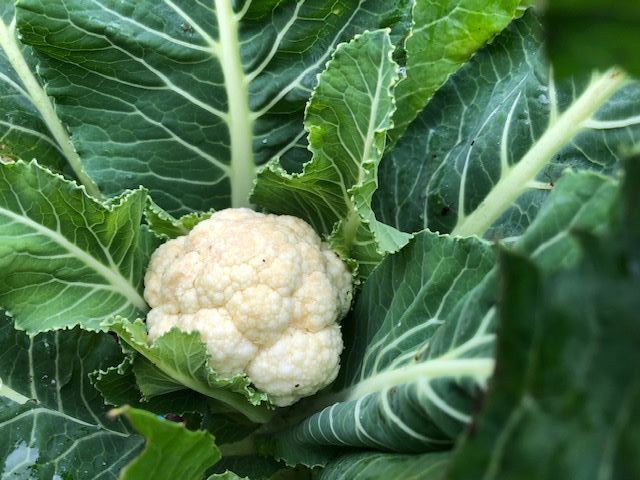
Cauliflower – A low carb substitute for your diet
Brassica oleracea var. botrytis.
As other men in their fifties might attest, the metabolism isn’t quite what it used to be! I personally find it hard to keep the weight off for a variety of reasons, including having a fairly sedentary day job and an injury aversion to the exercise that I enjoyed in younger years. It’s a vicious cycle and I have had to find other ways to stay healthy. For me active work in the garden and a sometimes reluctant change in diet is what actually makes a difference to my physical and mental well-being.
Cauliflower has become an unexpected hero in my carbohydrate aware diet, as it can substitute or supplement for high carb foods like potatoes and rice. A good example of this is only using half (or less) the amount of potatoes in a mash mixed in with cauliflower, this way there is still enough starchiness to hold it together and look and taste like a traditional mash. My Wife made the tamariki some mac cheese with cauliflower through the sauce which was a good way to sneak some veges into their diet as well.
The result of this change in diet is that I am growing a lot more cauliflower than I used to. I’ve learned some good lessons and had some problems with cauliflower bolting during Autumn which I’m attributing to a much warmer April and May than usual. These particular cauliflowers were in pots in the tunnelhouse which obviously became too hot. Let’s look at how to grow this super versatile food together.
KUPU: kareparāoa (transliteration)
SOW – TRANSPLANT – HARVEST
This table is what I use in the Waikato, which has a temperate climate. It is possible to grow cauliflower all year but this is roughly when it is easiest to grow where I am. So how do you know what to do in your region? It’s best to become familiar with your seasonal temperature ranges.
Cauliflower | JAN | FEB | MAR | APR | MAY | JUN | JUL | AUG | SEP | OCT | NOV | DEC |
SOW |  |  |  |  |  |  | ||||||
TRANSPLANT |  |  |  |  |  |  | ||||||
HARVEST |  |  |  |  |  |  |
To grow cauliflower in New Zealand, follow these steps:
The Basics
- Choose a site with full sun exposure and well-draining soil with a pH of 6.0 to 7.5.
- The ideal temperature range for growing cauliflower is between 15-20°C but they don’t mind it colder it will just take longer for maturity. Anything over 25°C and you will get to see what cauliflower flowers look like.
- My preference is to sow cauliflower seeds indoors in seed trays or soil blocks 6-7 weeks before transplanting. This is mostly because of slug damage.
- Plant seeds 0.5-1 cm deep. I usually thin out my seedlings once they are a few cms tall and have true leaves.
- Because I’m a home gardener I can take the time to transplant my seedlings into larger pots to give them a better fighting chance against slugs and snails, manage the soil needs and manage the temperature by keeping them in the tunnel house or under a cover of some type. If it is a large pot the cauliflower can stay there until it is time to harvest or it can be transplanted one more time into the garden bed. I’ve done this in the cold winter months as a means to getting an ongoing harvest of cauliflower.
- Spacing for the garden bed is about 60 – 75cm apart as they do like to spread their leaves out.
- Fertilize the cauliflower plants with a balanced fertilizer that is high enough in nitrogen to encourage leaf growth.
- Water regularly to keep the soil moist.
- When the cauliflower heads begin to form, blanch them by folding the outer leaves over the head and securing with twine or just break one without pulling it off. This will protect the head from sunlight and ensure it remains white.
- Harvest the cauliflower heads when they reach a size of 15-20cm in diameter. Cut the head off the stem with a sharp knife.
- Harvest can be anywhere between 90-120 days depending on the temperature.
- Once harvested, store the cauliflower in the refrigerator or freezer to retain freshness.
In New Zealand, cauliflower can be grown year-round in warmer regions such as Northland and Auckland, but in cooler parts of the country such as the South Island, it is best grown in the warmer months between September and April. It is important to monitor the soil temperature and adjust watering as necessary to ensure that the cauliflower plants receive the right amount of moisture
Tip:
Slugs love cauliflower as a hide out spot they don’t tend to do a lot of damage to the head itself but you can often find them hiding at the base of the head under and among the young leaves. I always hose the heads first then submerge my cauliflower in a sink full of either cold water with a little bit of white vinegar or hot water to blanche.
Varieties of cauliflower in NZ
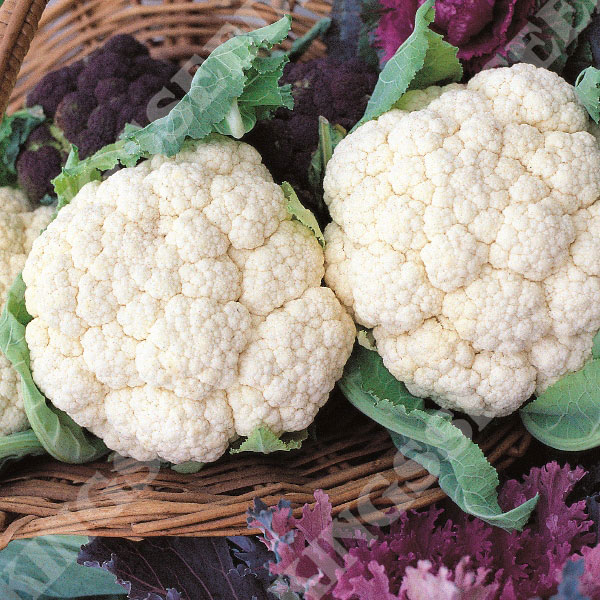
Snowball
1. A popular variety of cauliflower in New Zealand, snowball has a round head that is dense and firm.
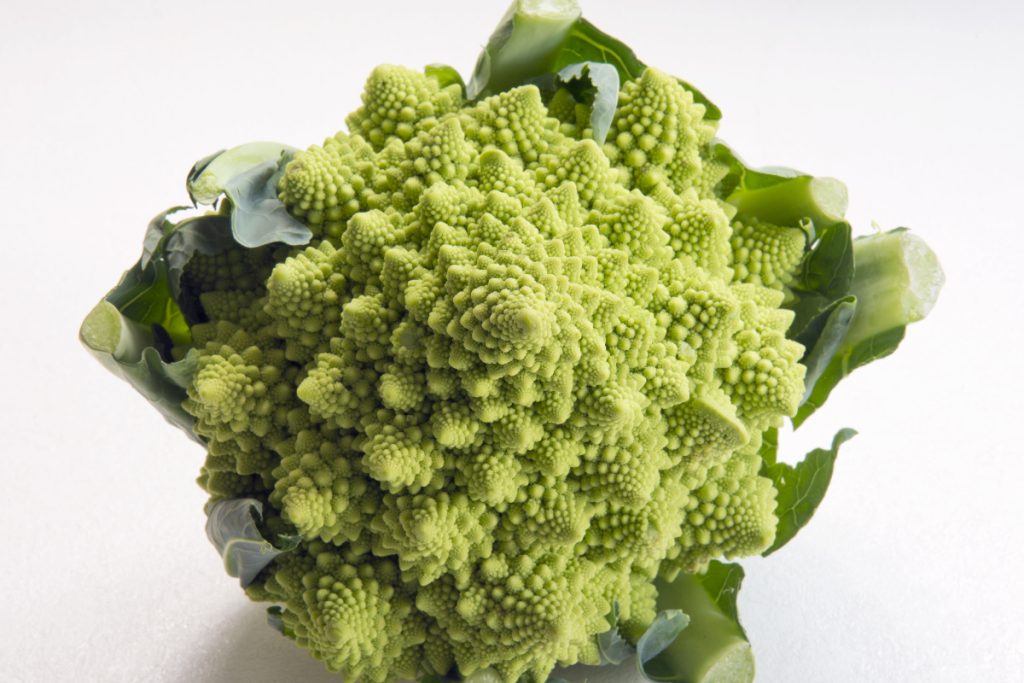
Romanesco:
2. This is a visually striking variety of cauliflower with pointed, lime-green curds arranged in a spiral.

Purple:
3. As the name suggests, this cauliflower variety has a striking purple hue. It is also known as purple cape broccoli.
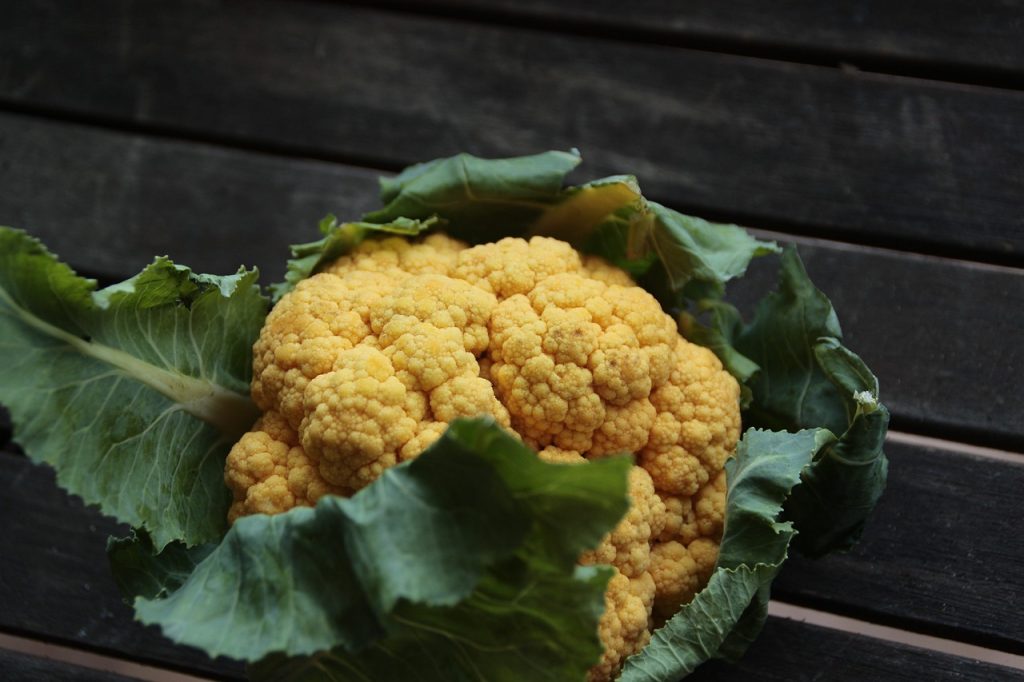
Cheddar:
4. This is a hybrid variety of cauliflower that has a bright orange color and a mild, nutty flavor.
5. Graffiti:Another colorful variety, graffiti cauliflower has vibrant purple heads that are relatively small and can be eaten raw or cooked.
6. Early White: A classic heirloom variety, early white cauliflower has a creamy-white head that is medium-sized and slightly flattened.
7. Autumn Giant: This is a large, late-maturing variety of cauliflower with a dome-shaped head that can grow up to 30cm in diameter.
8. All Year Round: A hardy and reliable cauliflower variety, all year round produces medium-sized, white heads that are ideal for most cooking methods.
9. Minaret: A compact cauliflower variety that is well-suited to small gardens, minaret produces small, white heads that are perfect for single servings.
10. Veronica: A newer hybrid variety, veronica cauliflower has a dense, white head that is slightly flattened with a mild, sweet flavor.
Recipes
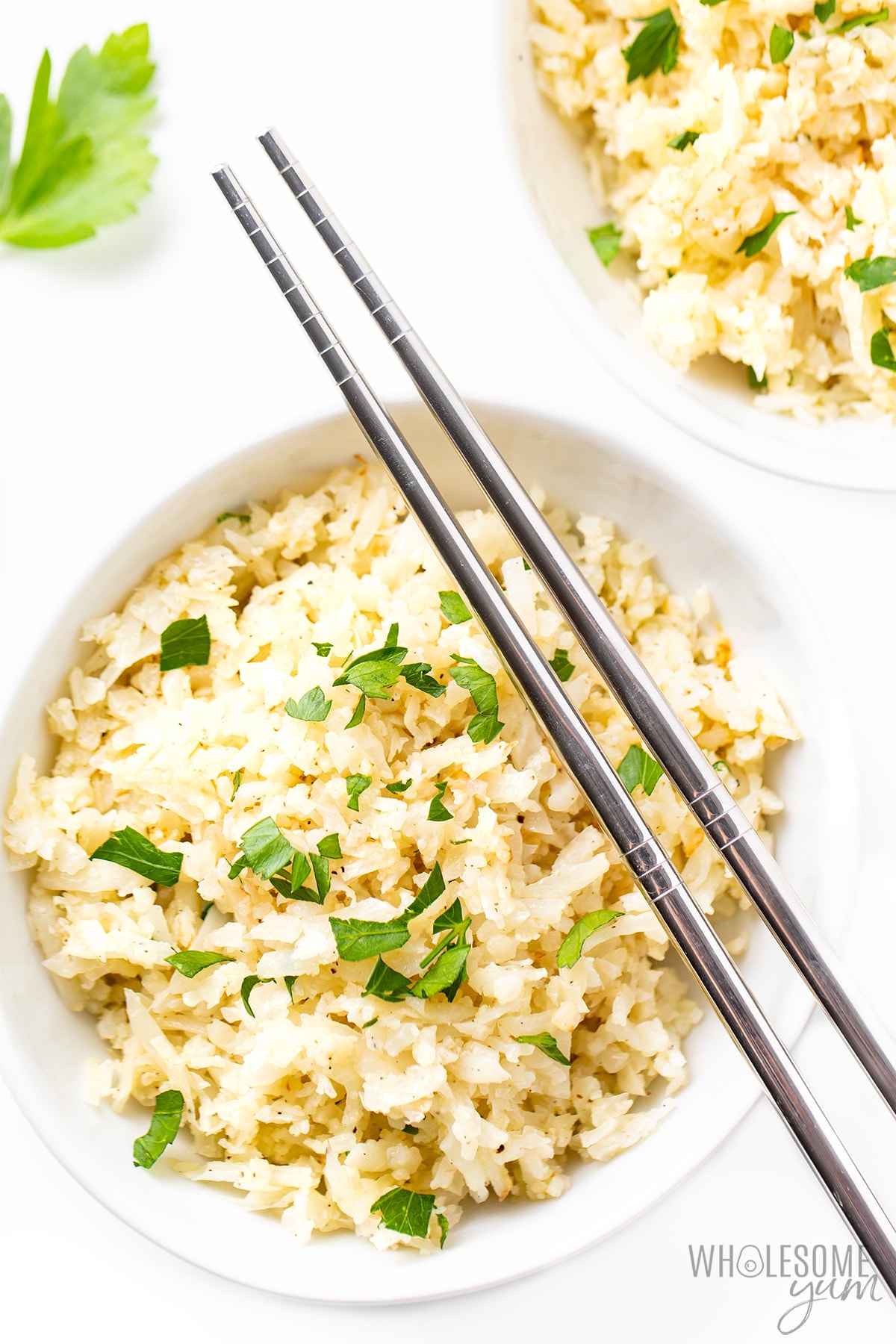
- A few tips on making cauliflower rice
- This Cauliflower and swede mash/puree is keto friendly and tastes great.
Tag:cauliflower, diet, weight loss




